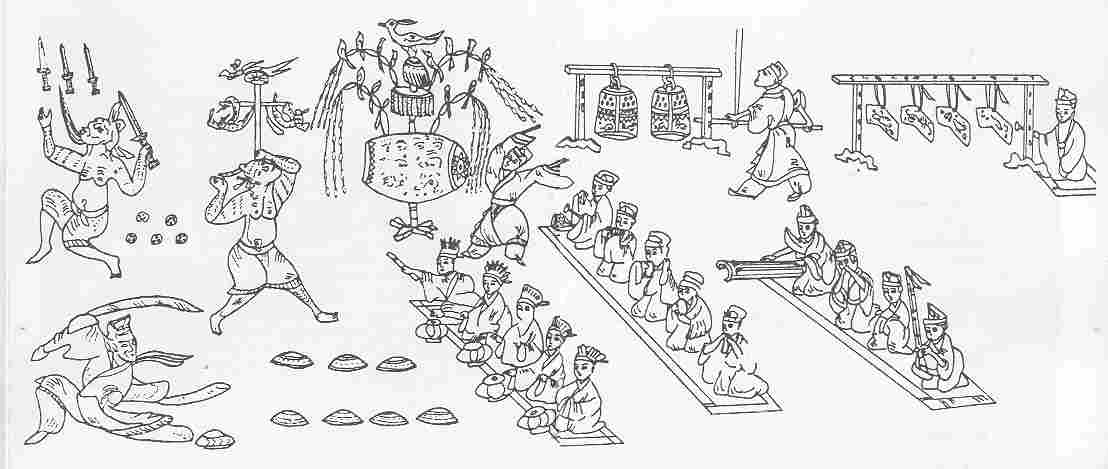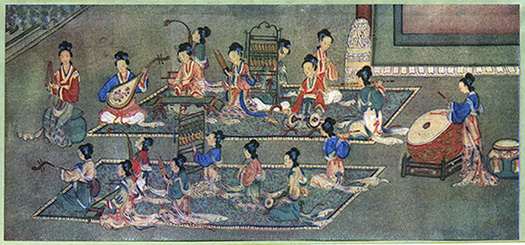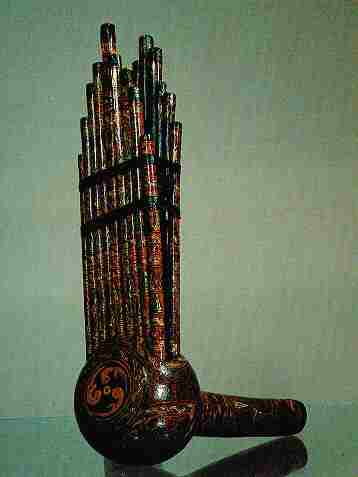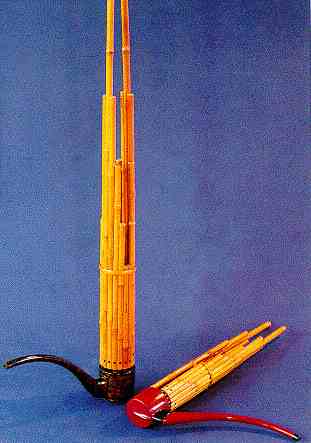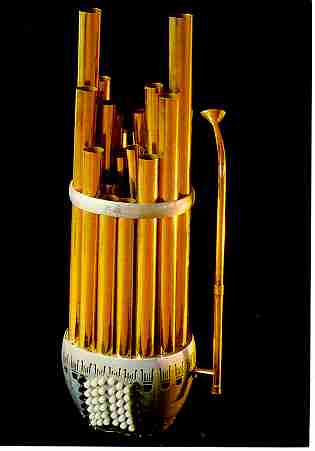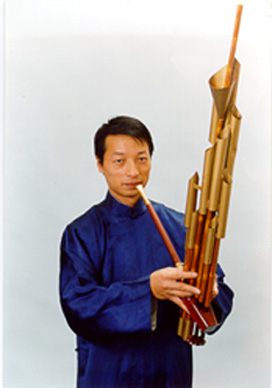Very few people can read Gongche notation anymore, even professional
shêng players. Today, shêng players are trained to read modern staff
notation, as well as tablature, which uses numbers and other symbols to
indicate the pitches and rhythms. The following example is a type of
tablature which originally came to China from the West via Japan.
During the second half of the twentieth century, improvements were made to
the shêng. There are now shêngs with 36 and 51 pipes (with keys to extend
the range of the fingers), as well as amplified shêng, alto shêng, bass
shêng and keyboard shêng. There are also chromatic shêngs which allow the
performer to modulate to different keys as well as play complicated chords
and polyphonic passages. The bass shêng, also known as BaoShêng,
is large and heavy and has to be placed on the lap or on the floor. Its
sound is low and mellow and it can produced a great variety of chords.
Steel tubes are used instead of bamboo tubes, for large bamboo tubes that
resonate low pitch notes are difficult to find.
Example 5: Happy Woman Soldiers from the ballet The Women
Soldiers of the Red Army as arranged by Shi Po and Tang Fu for shêng
(early 1975). This ballet was created during the Cultural Revolution and
is very well known in China. This example appeared in the anthology
Best Selection of Shêng: Compositions from 1949 to 1979. It was
compiled by Chinese Musical Associations and published by
People's Music Publishing House in Beijing.
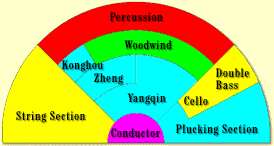
As in the past, the shêng today is still an integral part of the cultural
life of the Chinese people. The modern Chinese orchestra consists of four
sections: woodwind, string, plucked string and percussion. The string
section consists of instruments like the GaoHu, ErHu, ZhongHu and
occasionally, a BanHu. The plucked string section consists of
instruments like the LiuQin, Pipa, Zhong Ruan, Da Ruan and
occasionally, San Xian. In the woodwind section are instruments
like Dizi (Bangdi, Qudi and Xindi), Suona and
Shêng. The percussion section consists of instruments like the
Chinese drums, gongs and timpani. The modern Chinese orchestra uses the
cello and double bass to strengthen the bass composition of the orchestra.
Before the introduction of these Western musical instruments the main bass
string instrument was the GeHu. Other instruments include the
Konghou (harp), Zheng (zither) and Yangqin
(hammered dulcimer).
(End note 8)
Very few shêng players have concertized in the West. Wang Zheng Ting (b.
1955) is a graduate of the Shanghai Conservatory and holds an M.A. degree
in Ethnomusicology from Monash University in Australia. He is the founder
and director of the Australian Chinese Music Ensemble and has actively
promoted Chinese music throughout that country. His 1997 US tour
included both lectures at various universities and the premiere in
Minnesota of his Concerto for Sheng, commissioned by the American
Composers Forum. Wang is presently pursuing the Ph.D. in Ethnomusicology
at the University of Melbourne. I had the pleasure of meeting him and
hearing him perform in 1999 at a
concert
in New York City sponsored by The Center for the Study of Free-Reed
Instruments (Graduate School and University Center of the City
University of New York).
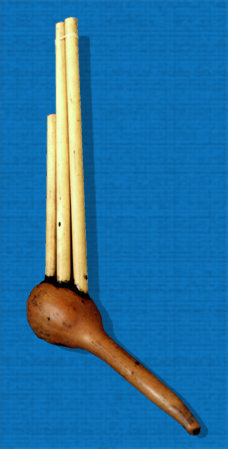
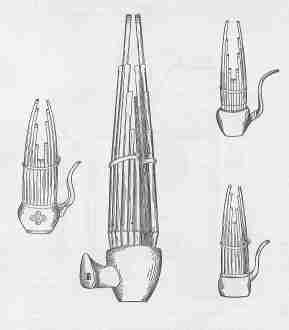
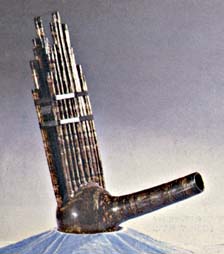
 is the same as the pronunciation of another Chinese character "shêng"
(rising). Therefore the instrument implies luck and auspiciousness.
is the same as the pronunciation of another Chinese character "shêng"
(rising). Therefore the instrument implies luck and auspiciousness. 